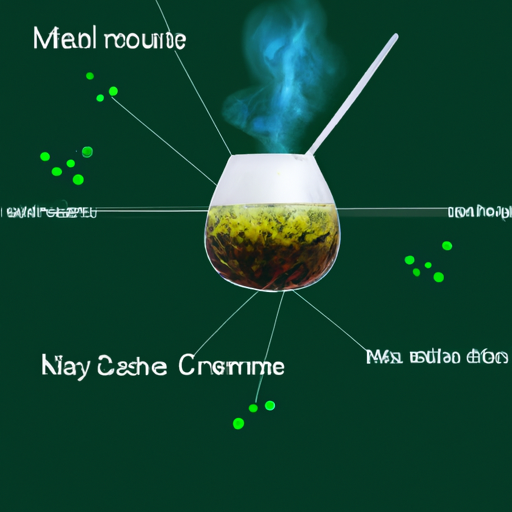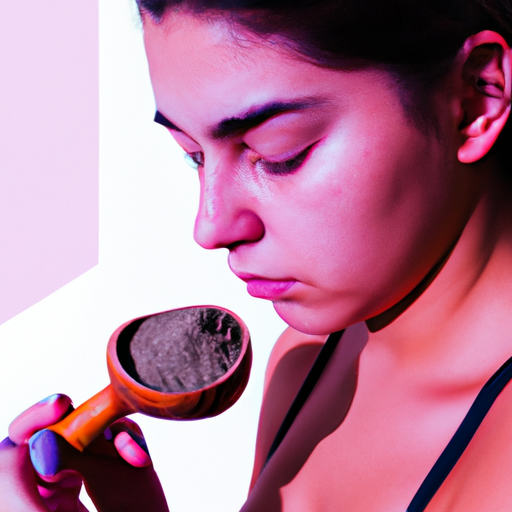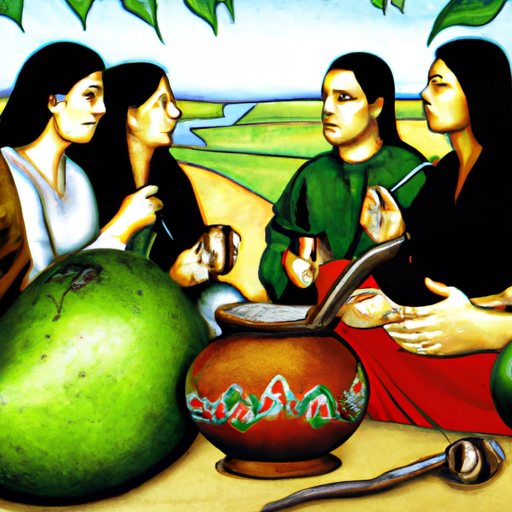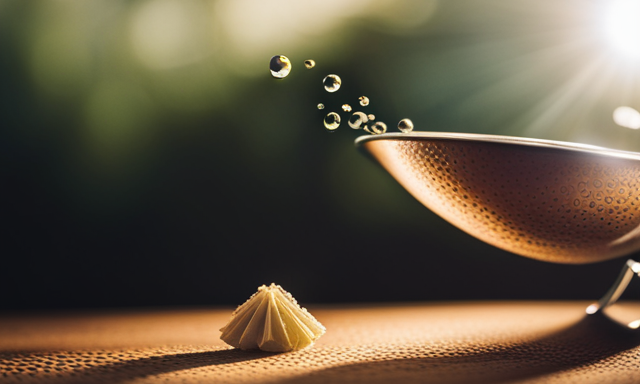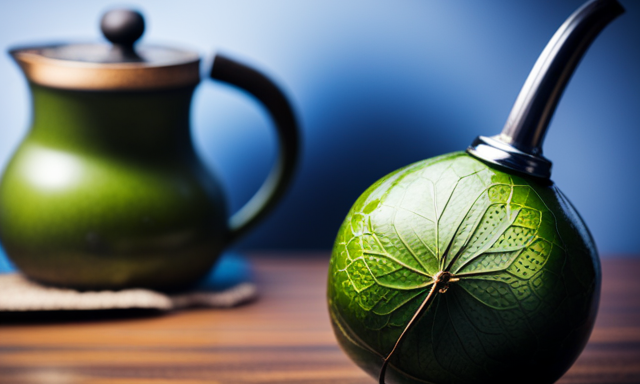I’ve always enjoyed drinking coffee, but I’ve recently ventured into the delightful realm of yerba mate. This herbal tea from South America has been savored for hundreds of years and has gained popularity lately because of its wide range of health advantages.
However, as someone who is sensitive to caffeine, I was curious about how much caffeine yerba mate actually contains and whether it would be a suitable alternative to my beloved cup of coffee.
After doing some research, I learned that yerba mate does contain caffeine, but the amount can vary depending on factors such as the type of yerba mate and how it is prepared.
As someone who values transparency when it comes to food and drink labeling, I wanted to share what I learned about the caffeine content of yerba mate so that others can make informed choices about their beverage consumption.
Key Takeaways
- Yerba mate’s caffeine content varies depending on type and preparation, with Argentinean yerba mate having more caffeine than Brazilian or Paraguayan varieties.
- The average cup of yerba mate contains 30-50 mg of caffeine per serving, offering a smoother energy boost than coffee.
- Yerba mate has numerous health benefits, including antioxidants, improved mental clarity, and improved cardiovascular health with anti-inflammatory properties.
- However, excessive caffeine intake can have negative effects on mental and physical health, and addiction and withdrawal symptoms are possible with regular consumption. Certain groups may want to limit intake, such as those sensitive to caffeine or taking certain medications. Consult a physician before trying yerba mate if unsure about sensitivity or medication interactions.
What is Yerba Mate?
Yerba mate’s a South American drink made from the leaves of the yerba mate plant. It’s a popular beverage in countries like Argentina, Uruguay, and Paraguay.
Aside from being a flavorful drink, yerba mate also has several health benefits. It’s said to boost energy levels, improve mental clarity, and aid digestion. Some studies have even shown that it can lower cholesterol levels and reduce the risk of heart disease.
In addition to its health benefits, yerba mate also holds cultural significance in South America. It’s often enjoyed with friends or family members during social gatherings or as a way to relax after work. The preparation and consumption of yerba mate are deeply ingrained in the daily lives and traditions of people in this region.
Whether you prefer your yerba mate hot or cold, there are several ways to prepare this delicious drink.
How is Yerba Mate Prepared?
To prepare this energizing drink, simply add hot water to the dried leaves and let it steep for a few minutes. Yerba mate is traditionally consumed from a hollowed-out gourd and sipped through a metal straw called a bombilla, but modern-day preparation methods have evolved to include tea bags and loose-leaf infusers.
Cultural significance plays an important role in yerba mate preparation. In South America, sharing yerba mate is a symbol of friendship and community. The person preparing the drink is responsible for ensuring that everyone receives an equal amount of liquid from the shared gourd.
Other traditional methods of preparing yerba mate include adding sugar or honey to sweeten the taste or mixing it with other herbs like mint or lemon verbena for added flavor. Regardless of how it’s prepared, yerba mate remains a beloved cultural tradition in many parts of South America.
As we explore how much caffeine yerba mate has, it’s important to understand how this beverage is prepared and its cultural significance. So now that you know how to prepare yerba mate, let’s delve into what exactly caffeine is and how much of it can be found in this beloved drink.
What is Caffeine?
Caffeine is a stimulant that affects the central nervous system and can be found in various beverages and foods. While it can improve alertness, concentration, and mood, it can also lead to negative side effects such as anxiety, jitters, and insomnia.
The recommended daily intake of caffeine varies depending on age, weight, and individual sensitivity.
Definition and Effects
When consumed in moderation, yerba mate can provide a boost of energy and improve mental clarity without the jitters that coffee can cause. This is because yerba mate contains caffeine, a natural stimulant that affects the central nervous system. Unlike other caffeinated beverages, such as coffee or energy drinks, yerba mate has a smoother effect on the body due to its unique combination of caffeine and other compounds.
However, it’s important to note that everyone’s caffeine tolerance varies. Consuming too much caffeine can lead to negative side effects, such as anxiety, insomnia, and an increased heart rate. Additionally, long-term effects may include dependence and withdrawal symptoms when trying to cut back on intake. It’s important to listen to your body and consume yerba mate in moderation.
Incorporating yerba mate into your daily routine may be beneficial for overall health due to its antioxidant properties. Nevertheless, it’s essential to keep in mind that there is still a recommended daily intake for caffeine consumption. Let’s explore how much caffeine is actually in yerba mate next.
Recommended Daily Intake
You don’t want to overdo it with yerba mate and risk negative effects, so it’s important to know the recommended daily intake. The safe levels of yerba mate consumption will differ depending on an individual’s weight, age, and overall health. However, a general guideline is to stick to no more than 1-2 cups per day.
To further understand the recommended daily intake of yerba mate, take a look at this table:
| Body Weight | Daily Intake |
|---|---|
| Up to 150 lbs | 1 cup |
| 151 – 200 lbs | 1.5 cups |
| Over 201 lbs | 2 cups |
It’s important to keep in mind that exceeding the recommended daily intake can lead to health risks such as insomnia, nervousness, increased heart rate and blood pressure. With moderation in mind, let’s dive into how much caffeine is in yerba mate?
How Much Caffeine is in Yerba Mate?
I’m excited to delve into the subtopic of how much caffeine is in yerba mate. It’s important to note that there are several factors that can affect the caffeine content, such as the type of yerba mate used and the brewing method.
Additionally, it’ll be interesting to compare the amount of caffeine in yerba mate with other popular beverages, such as coffee and tea.
Let’s explore this further!
Factors That Affect Caffeine Content
As I’m exploring the world of yerba mate, I’ve learned that several factors can affect its caffeine content. For instance, the amount of leaves used and how long it’s steeped can have an impact. Additionally, the type of yerba mate also plays a role; traditional Argentinean yerba mate has more caffeine than Brazilian or Paraguayan varieties.
Measurements have shown that an average cup of yerba mate contains about 30-50 milligrams of caffeine per serving. However, this number can fluctuate based on the aforementioned factors. It’s essential to keep these variables in mind when consuming yerba mate for its energizing effects.
Now, let’s take a look at how yerba mate compares to other popular beverages like coffee and tea.
Comparison with Other Beverages
When reaching for a refreshing beverage, consider how yerba mate compares to coffee and tea in terms of energy boost and taste. Yerba mate is known for its unique balance of caffeine, theobromine, and theophylline. This combination provides a smoother energy boost than coffee while still offering a comparable amount of caffeine per serving.
To better understand the differences between these beverages, take a look at the following table:
| Beverage | Caffeine content (mg) | Health implications |
|---|---|---|
| Yerba Mate | 30-50 | Provides antioxidants and may improve mental clarity |
| Coffee | 95-200 | May cause jitters or anxiety; can be addictive |
| Tea (black) | 25-48 | Contains L-theanine which promotes relaxation |
While yerba mate contains less caffeine than coffee, it offers additional health benefits such as providing antioxidants and potentially improving mental clarity. Additionally, it lacks some negative side effects that are commonly associated with coffee consumption such as jitters or anxiety. With this information in mind, consider trying out yerba mate as an alternative to your morning cup of joe.
Next up: Let’s explore some of the benefits that come with drinking yerba mate.
The Benefits of Yerba Mate
You’ll be impressed by the numerous benefits of yerba mate, including increased focus and energy without the jitters that come with coffee. Not only does yerba mate provide a natural caffeine boost, but it also contains antioxidants and other beneficial compounds that can improve overall health. In fact, some studies suggest that yerba mate may even help reduce the risk of certain diseases.
One of the most significant health benefits of yerba mate is its ability to improve cardiovascular health. The antioxidants found in this tea can help lower cholesterol levels and prevent the buildup of plaque in arteries. Additionally, yerba mate has been shown to have anti-inflammatory properties, which can further protect against heart disease.
Beyond its health benefits, yerba mate also holds cultural significance for many people in South America. It is often consumed in social settings as a symbol of friendship and hospitality. In some countries like Argentina, drinking mate is an integral part of daily life and has become an important cultural tradition.
Overall, there are plenty of reasons to give yerba mate a try if you’re looking for a natural energy boost or want to incorporate more antioxidants into your diet. However, it’s important to note that there are also potential drawbacks to consuming too much caffeine or drinking yerba mate at certain times of day. We’ll explore these concerns in more detail in the next section.
The Drawbacks of Yerba Mate
So, while yerba mate has many benefits, it’s important to also consider the potential drawbacks. As someone who consumes yerba mate regularly, I’m aware of the negative effects that caffeine can have on my body.
From jitters and anxiety to disrupted sleep patterns, excessive caffeine intake can take a toll on both mental and physical health. Additionally, there’s a potential for addiction with regular consumption of caffeinated beverages like yerba mate.
Negative Effects of Caffeine
Although caffeine can provide a temporary boost in energy, it may also lead to negative effects such as jitters and anxiety. Consuming too much caffeine can result in caffeine overdose, which can cause symptoms such as rapid heartbeat, nausea, and vomiting.
Moreover, drinking caffeinated beverages like yerba mate close to bedtime can disrupt sleep patterns and lead to sleep disturbances.
In addition to the physical consequences of consuming too much caffeine, there’s also the potential for addiction. Caffeine affects the brain’s levels of dopamine, a neurotransmitter associated with pleasure and reward. Regular consumption of caffeine can lead to tolerance, meaning that more of the substance is needed over time to achieve the same effect.
This increased dependence on caffeine can make it difficult to quit or reduce consumption without experiencing withdrawal symptoms such as headaches and fatigue.
Potential for Addiction
It’s easy to get hooked on the pleasurable effects of caffeine, with regular consumption leading to increased tolerance and potential withdrawal symptoms if you try to quit.
The addiction potential of caffeine is well-known, as it stimulates the release of dopamine in the brain – a neurotransmitter associated with pleasure and reward.
Over time, our brains become accustomed to this rush of dopamine and need more caffeine to achieve the same effect.
When we abruptly stop consuming caffeine, we may experience withdrawal symptoms such as headaches, fatigue, irritability, and difficulty concentrating.
These symptoms can last for several days or even weeks depending on how much caffeine was consumed regularly.
While yerba mate contains less caffeine than coffee or tea per serving, it still has enough to potentially lead to addiction and withdrawal symptoms in individuals who consume large amounts regularly.
Who should avoid yerba mate?
Let’s look at some groups who may want to limit their intake due to potential health risks.
Who Should Avoid Yerba Mate?
If you’re sensitive to caffeine or taking certain medications, you may want to avoid yerba mate. While it is a popular drink in South America and gaining popularity worldwide, there are some dangers and risks associated with consuming too much of it. Yerba mate contains caffeine, theobromine, and theophylline which can cause adverse reactions in some people.
To determine whether or not you should avoid yerba mate, it’s important to know how much caffeine it contains. The amount of caffeine varies depending on how the yerba mate is prepared and consumed. A 1g serving of dried leaves typically contains between 30-50mg of caffeine. However, if brewed with boiling water like traditional tea, one cup (8oz) can contain anywhere from 30-85mg of caffeine.
It’s also important to note that certain medications can interact negatively with yerba mate. If you’re taking drugs for anxiety, depression, high blood pressure or heart disease, consult your doctor before consuming yerba mate as it can interfere with these medications. Additionally, pregnant women and children under the age of 18 should also avoid consuming large amounts of caffeine.
If you’re considering trying yerba mate but are unsure if it’s right for you due to sensitivity to caffeine or medication interactions, consult your physician first. It’s always better to err on the side of caution when it comes to your health. In the next section we’ll discuss how to choose the right type of yerba mate for your needs without compromising on taste or quality.
How to Choose the Right Yerba Mate
To find the perfect type of yerba mate for you, start by exploring different brands and flavors that match your personal taste preferences. Yerba mate comes in various brands and flavor profiles, each with a unique taste and aroma. Some popular brands include Cruz de Malta, La Merced, and Taragui.
Each brand has its own distinct flavor profile depending on the region where it was harvested. For instance, Argentinean yerba mate is known for its bold and robust flavor while Paraguayan yerba mate is lighter and more delicate. When choosing a yerba mate brand, consider your personal preference for sweetness or bitterness. Some brands have a naturally sweeter taste while others can be quite bitter.
Additionally, experiment with different types of blends such as pure leaf or blended with herbs like peppermint or chamomile to find your ideal flavor profile. Once you’ve found the right brand and flavor profile that suits your taste buds, it’s time to master the art of brewing techniques and tips for a perfect cup of yerba mate.
But before we dive into that topic, let’s explore some additional factors to consider when selecting yerba mate such as organic vs non-organic options or fair trade certifications.
How to Brew Yerba Mate
Brewing yerba mate can be a delightful experience when you understand the right techniques and steps to follow. The first thing to consider is the temperature of your water. Yerba mate should never be brewed with boiling water, as it can scorch the leaves and create a bitter taste. Instead, heat your water to around 150-160°F (65-70°C) for optimal brewing.
Next, it’s important to choose the right brewing technique for your desired flavor profile. Traditional South American methods involve steeping yerba mate in a gourd or cup with hot water and sipping it through a bombilla straw. However, there are many other ways to brew yerba mate, such as using a French press or tea infuser. Experiment with different methods to find what works best for you.
Remember that the longer you steep yerba mate, the stronger its flavor will be. It’s recommended to steep for no more than 5 minutes before enjoying your beverage.
By following these simple brewing techniques and experimenting with different methods, you’ll be able to experience all the unique flavor profiles that yerba mate has to offer.
Frequently Asked Questions
What are the potential side effects of consuming too much yerba mate?
It’s important to consume yerba mate in moderation and balance, as there can be potential long term effects from consuming too much. Some side effects of overconsumption may include headaches, jitteriness, and difficulty sleeping.
However, it’s worth noting that yerba mate has been shown to have numerous health benefits when consumed in appropriate amounts. It contains antioxidants and nutrients like vitamins B and C that can support overall health.
Ultimately, the key is to listen to your body and find the right amount for you. As with any food or beverage, it’s important to practice moderation and balance for optimal health outcomes.
Can yerba mate be combined with other ingredients to enhance its effects?
I’ve found that yerba mate can definitely be combined with other herbal additives to enhance its effects.
I’ve experimented with different brewing techniques and have found that adding lemon or mint leaves can give it a refreshing twist, while cinnamon or ginger can add some warmth and spice.
Some people even add milk or honey for added sweetness. However, it’s important to do your research on the specific herbs you plan on adding and their potential interactions with yerba mate.
It’s always best to start small and gradually increase the amount of additives until you find the perfect balance for your taste buds and desired effects.
Is it safe to consume yerba mate during pregnancy?
As a soon-to-be mother, I’m always concerned about what I consume and how it may affect my pregnancy.
One thing that has been on my mind lately is the safety of drinking yerba mate while pregnant. While yerba mate does contain caffeine, which is typically restricted during pregnancy, studies have shown that consuming moderate amounts of yerba mate (up to 300mg/day) is safe for both mother and baby.
In fact, some traditional uses of yerba mate beyond caffeine consumption include aiding digestion, reducing inflammation, and improving mental clarity. Additionally, yerba mate contains antioxidants and nutrients such as vitamins A, C, E, B1, B2, niacin, and pantothenic acid which can provide potential health benefits for both mother and baby.
However, it’s important to remember that every woman’s body is different, so consulting with a healthcare provider before consuming any new substances during pregnancy is always recommended.
How does the caffeine content in yerba mate compare to other popular beverages?
When comparing the caffeine content in yerba mate to other popular beverages, it’s important to note that yerba mate is known to have a lower amount of caffeine than coffee.
However, the caffeine in yerba mate is still enough to provide an energy boost without causing jitters or crashes like some energy drinks may do.
While there are pros and cons of consuming yerba mate in energy drinks, it’s generally advised to stick to traditional forms of drinking yerba mate such as brewed tea or infusion.
Overall, if you’re looking for a natural source of caffeine with potential health benefits, yerba mate can be a great option compared to other high-caffeine beverages.
Are there any cultural or traditional uses for yerba mate beyond its caffeine content?
Cultural significance and traditional preparation methods are two aspects of yerba mate that go beyond its caffeine content. Yerba mate has been a staple in South American culture for centuries, with social gatherings often centering around the preparation and consumption of the drink.
Traditional preparation involves using a gourd and bombilla (a metal straw with a filter) to steep the dried leaves in hot water, while sharing the beverage among friends or family members. This communal aspect of yerba mate highlights its importance as not just a source of caffeine, but also as a symbol of social connection and tradition.
Conclusion
After diving deep into the world of Yerba Mate and its caffeine content, I can confidently say that it’s an excellent alternative to coffee for those who are looking for a natural energy boost.
The unique taste and preparation process make it a refreshing drink that can be enjoyed hot or cold.
As I sipped on my freshly brewed Yerba Mate, I couldn’t help but imagine myself sitting in a lush green forest surrounded by chirping birds and the sound of water flowing nearby.
It truly is a drink that connects you with nature and provides a sense of calmness while also giving you the necessary energy to power through your day.
While there are some drawbacks to excessive consumption, the benefits outweigh them when consumed in moderation.
So if you’re looking for a healthier alternative to coffee, give Yerba Mate a try and experience its energizing effects while immersing yourself in nature’s beauty.

